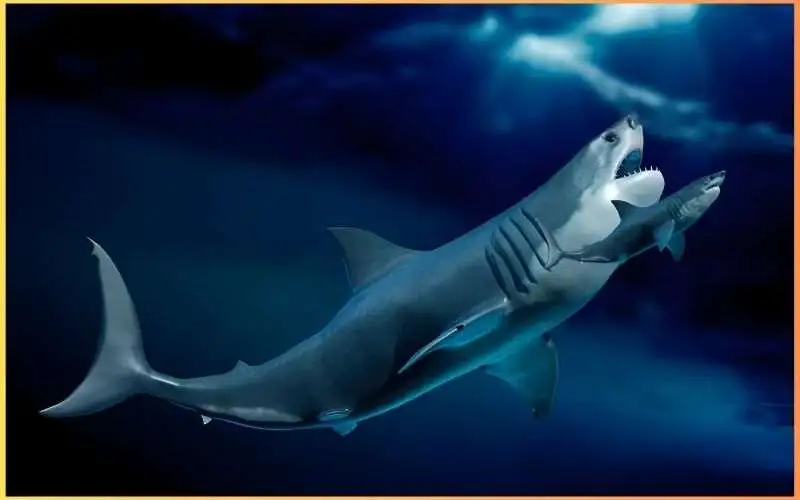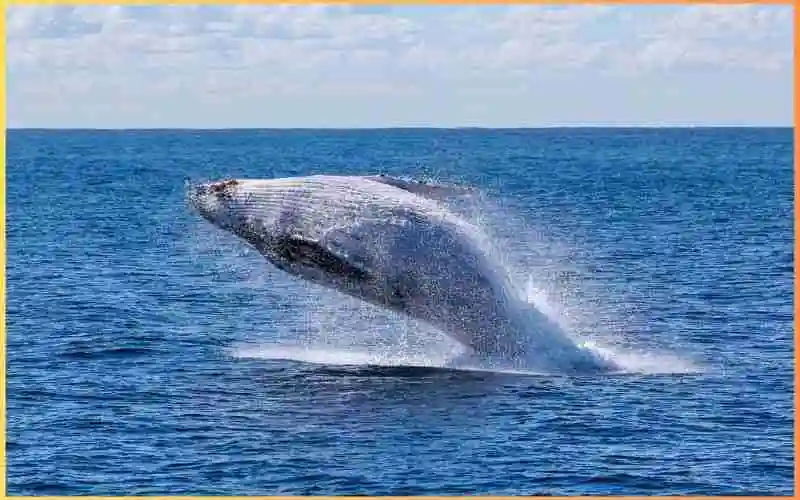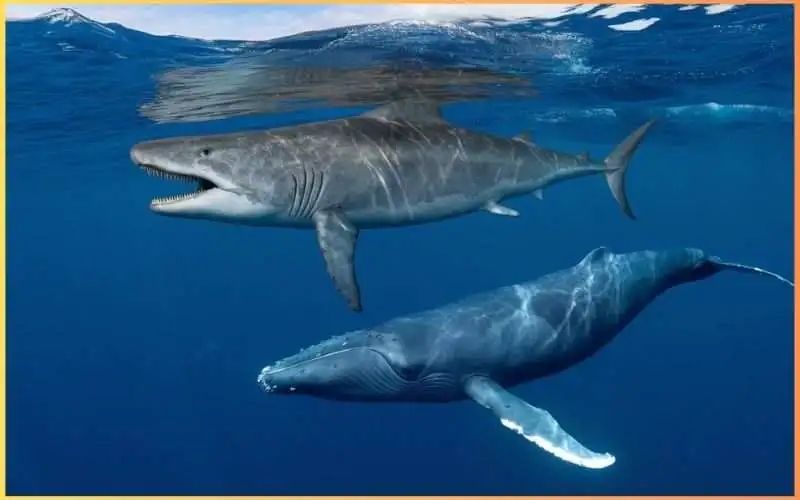The Megalodon vs Blue Whale size comparison is truly awe-inspiring. Megalodons and Blue Whales are the two most giant animals in the ocean. Although they have millions of years of differences, they also have some significant differences.
This blog post will discuss Megalodon vs. Blue Whale size, hunting and feeding habits, and reasons behind extinction.
The Megalodon

The Megalodon was a giant shark that lived between 20 million and 2.6 million years ago. When considering the Megalodon vs Blue Whale size, it’s important to note that the Megalodon could grow up to:
- Length: 60 feet (18 meters)
- Weight: Over 100 tons
These lengths and weights make the Megalodon a good competitor in the Megalodon vs. Blue Whale size contest.
The Megalodon shark had massive teeth almost three times longer than the great white shark.
With their big teeth, they hunted large mammals like seals, sea lions, whales, and shallow-water fish.
Scientists have found many Megalodon fossils. They believe the Megalodon went extinct due to climate change and competition from other species, such as killer whales.
The extinction of the Megalodon is similar to that of other top 10 extinct animals in India, demonstrating how even the mightiest creatures can succumb to environmental changes.
The Blue Whale

Besides the Megalodon, the Blue Whale is the largest animal on earth. In terms of size, it even surpasses the Megalodon. The Blue Whales are 100 feet long and weigh over 200 tons.
The Blue Whale’s diet is different from that of the megalodon. These animals eat tiny krill, shrimp-like crustaceans.
They need to consume vast amounts of food to support their massive size. They can consume up to 500 pounds (227 kg) of krill daily.
Blue whales achieve this by taking in huge mouthfuls of water and straining out small prey on their baleen plates. They are found in all the major oceans.
They can easily be found in the Atlantic, Pacific, and Indian Oceans. Blue whales are known for their long migrations, up to thousands of miles. Despite their size, they are passive animals.
In the 20th century, their global population dropped to 3,000-4,000 individuals because of high hunting. Their numbers have increased to around 10,000-25,000 today but remain endangered.
Comparing the Megalodon and Blue Whale
Now, I researched deeply and found some critical details about each of these ocean giants. Now, let’s dive into a more direct comparison:
Megalodon vs Blue Whale Size:

When we directly compare Megalodon vs Blue Whale size, we see that while both creatures are very close to each other but the Blue Whale is unmatched:
- Length:
- Megalodon: Up to 60 feet (18 m)
- Blue Whale: Over 100 feet (30 meters)
- Weight:
- Megalodon: Around 100 tons
- Blue Whale: Up to 200 tons
This Megalodon vs Blue Whale size comparison places both creatures among the 10 unique animals you don’t believe actually exist on earth.
Megalodon vs. Blue Whale Hunting and Feeding:
The Megalodon and the blue whale had different hunting and feeding strategies.
The Megalodon was a top predator, using its massive jaws and teeth to hunt and eat large marine animals such as whales, seals, and other sharks. Blue whales are filter feeders, eating tiny krill from the ocean.
Despite their differences, both successfully acquired the massive sustenance required to support their colossal sizes. The Megalodon and blue whale live in warm, shallow waters of major oceans.
Megalodon became extinct 2.6 million years ago. The blue whale has survived until now despite being nearly hunted to extinction in the 20th century.
It’s worth noting that neither species exhibits the behavior seen in some animals that eat their own young, showcasing the diversity of feeding habits in the animal kingdom.
Megalodon vs Blue Whale Extinction vs. Survival:
In the story of Megalodon vs Blue Whale size and existence:
- Megalodon: Became extinct approximately 2.6 million years ago
- Blue Whale: Has survived until the present day
Factors contributing to the Megalodon’s extinction include:
- Climate change
- Reduced food availability
- Competition from other species
Blue Whales face similar challenges today, which is why the International Union for Conservation of Nature (IUCN) classifies them as an endangered species.
Many conservation efforts have helped the blue whale population. The blue whale’s ability to adapt and avoid human hunting has been crucial for its survival in changing ocean environments.
Conclusion
Lastly, Megalodon vs Blue Whale size helps us understand how big animals are in the past and present oceans. Knowing and studying about these animals can help us protect marine species today. The two giant creatures grow curiosity in our hearts for their massive size. Studying these colossal creatures’ adaptations and behaviors can help us protect marine species today. The enormous size of the Megalodon and blue whale captures our curiosity about the diverse life on our planet.
For more information on these magnificent creatures and the Megalodon vs Blue Whale size comparison, you can explore resources from:
- Smithsonian National Museum of Natural History for Megalodon fossils and extinction details
- National Oceanic and Atmospheric Administration (NOAA) for Blue Whale facts and conservation efforts
- World Wildlife Fund (WWF) for information on Blue Whale conservation
- National Geographic for general information on both Megalodon and Blue Whales
By understanding the Megalodon vs Blue Whale size comparison and the history of these ocean giants, we can better appreciate the importance of marine ecosystems.

